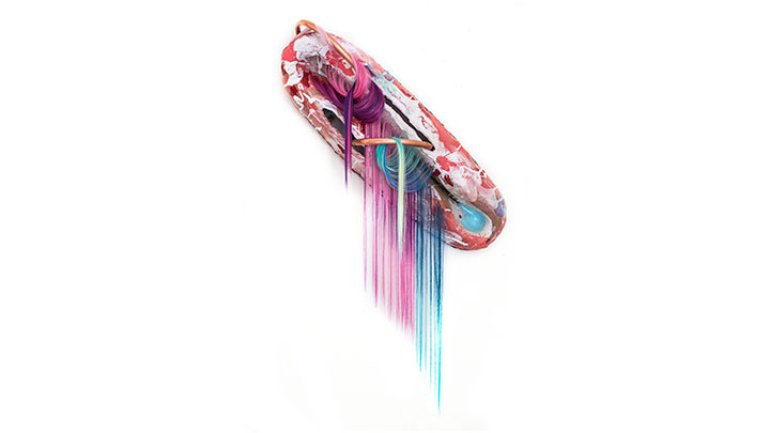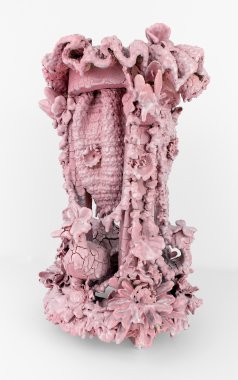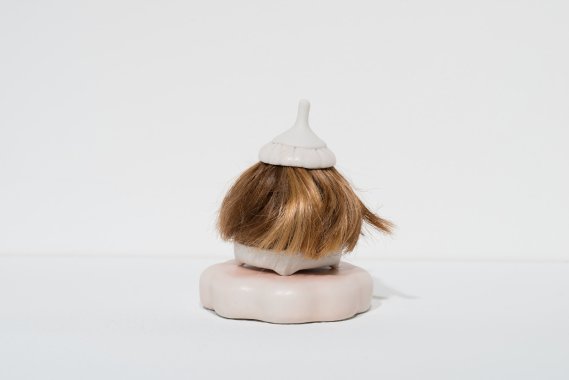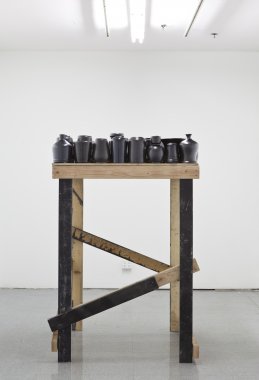Biennial Ceramic Survey Exhibition Debuts at CAFAM
Clay artists, educators, and aficionados converge in Pittsburgh this week for the annual NCECA conference, digging into this year’s theme “CrossCurrents: Clay and Culture.” Out on the West Coast, another excellent place to see a dynamic spectrum of expression in clay is the Craft and Folk Art Museum in Los Angeles, where a new biennial ceramic survey exhibition is making its debut.
“Melting Point: Movements in Contemporary Clay” (through May 6) is a snapshot of the strikingly diverse vanguard of ceramic art today, as seen in the work of 22 emerging and established artists from around the country. “Ceramic art is popular right now, but it’s coming from different perspectives. There’s a lot of experimentation by artists with a deep connection to the material, who are heavily invested in understanding its potential,” notes Holly Jerger, co-curator of the exhibition with Andres Payan. Loosely structured into three themes – anti-disciplinary process, object temporality, and sociopolitical interpretations – the works range from Cheryl Ann Thomas’ thin-coiled vessels that collapse into sculptural forms in the kiln, to Walter McConnell’s large-scale, ephemeral environment of damp, unfired clay, to Undocumented, an installation by Kahlil Robert Irving about the aftermath of the Ferguson uprising.
Opening night of the exhibition featured a powerful, wordless performance by Armando Cortes, a young Southern California artist originally from Urequio, a farming town in Mexico. Starting several blocks away in front of the Los Angeles County Museum of Art, Cortes shouldered a handcarved wooden yoke and dragged a heavy chunk of black clay along busy Wilshire Boulevard to the CAFAM galleries, to the amazement of passersby. Titled El Peso de la Tierra (“The Weight of the Earth”), the piece was a nod to his Catholic upbringing, a metaphor for the strength and endurance required for the repetitive labor of working with earthen materials, and an homage to his hometown. He sometimes imagines what his life would be like if he’d never left. “It’s a thought immigrants have,” he says. “What would I be doing? Would I be farming? Brick-making?” As an artist working with clay, he figures, he hasn’t strayed far.
Planned next for 2020, CAFAM’s clay biennial is envisioned as a forum for what Jerger calls “a continued conversation” about the state of ceramic art. “Our intent is to dive deep.”




